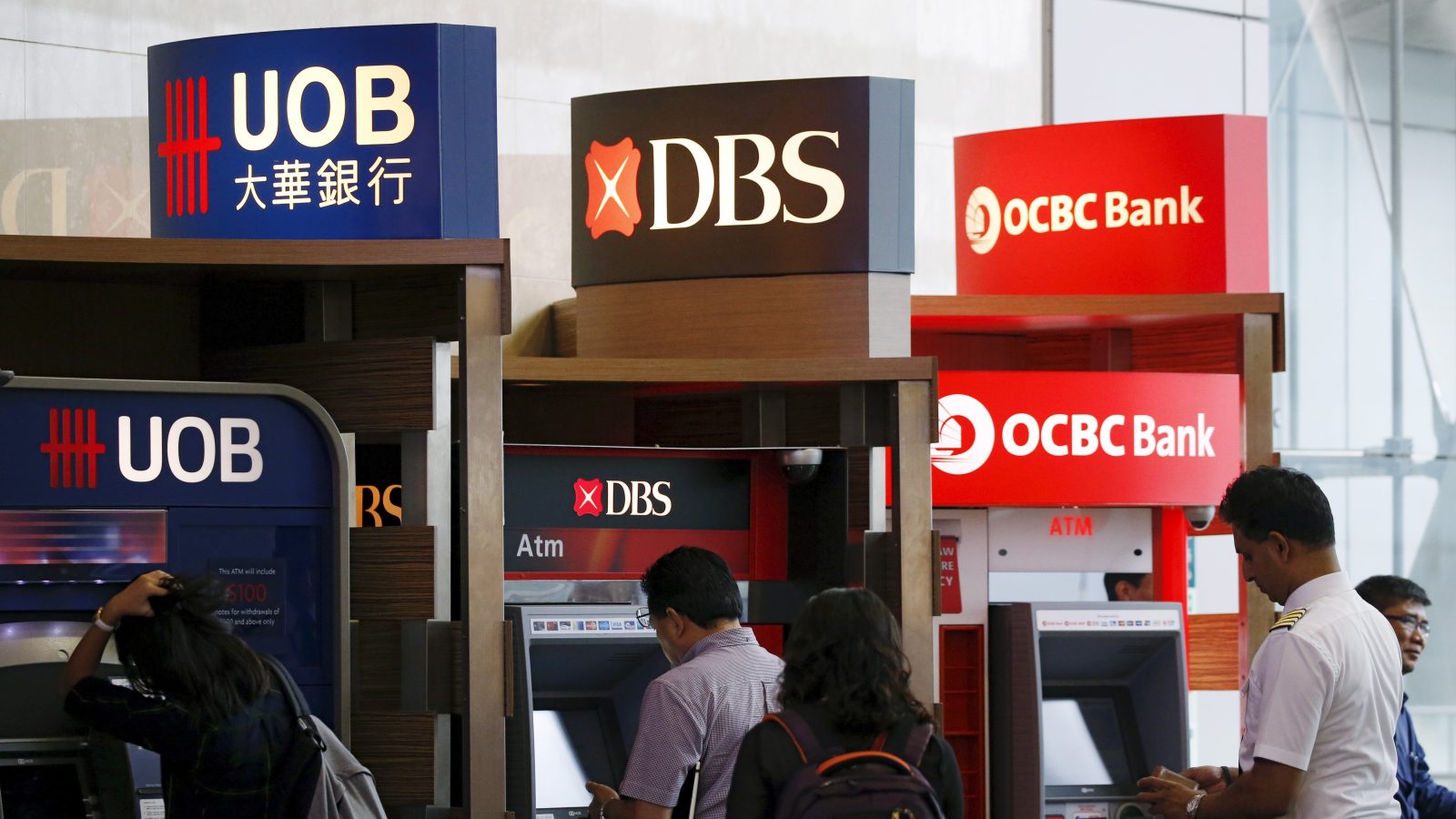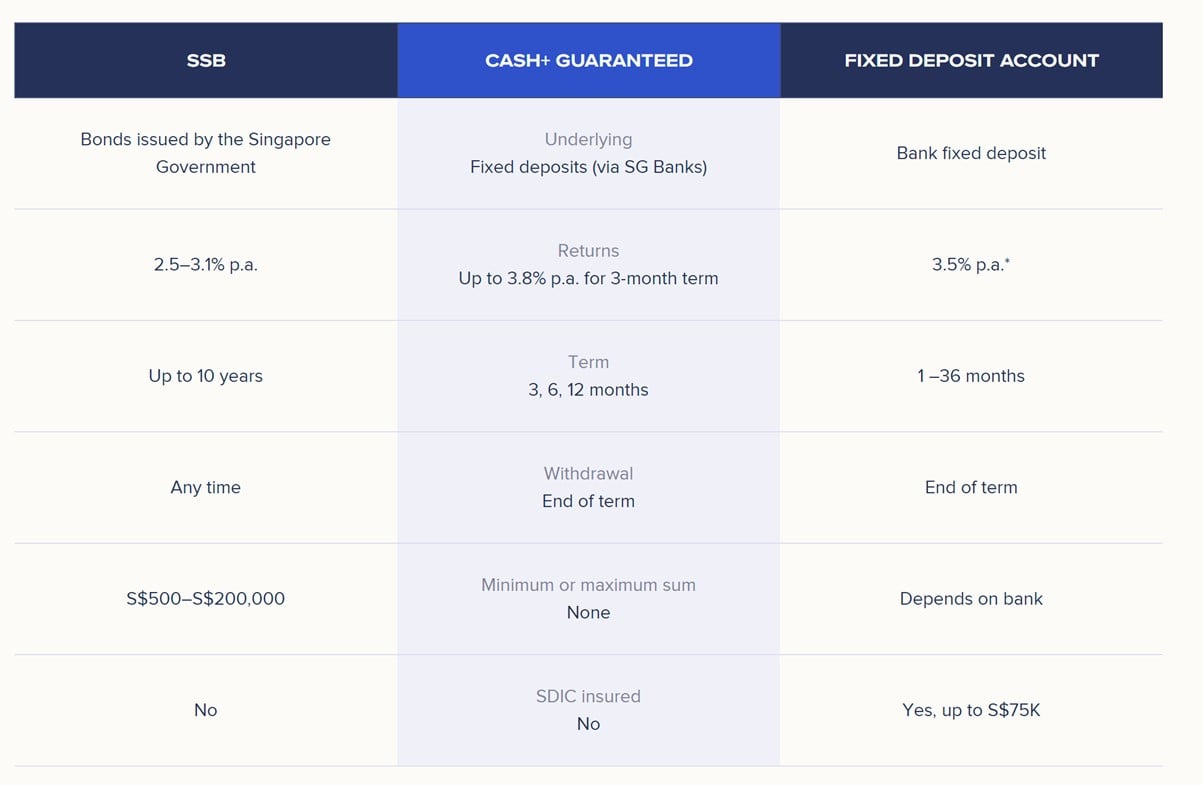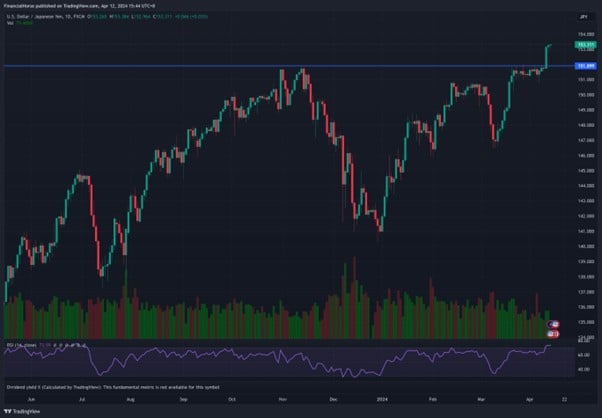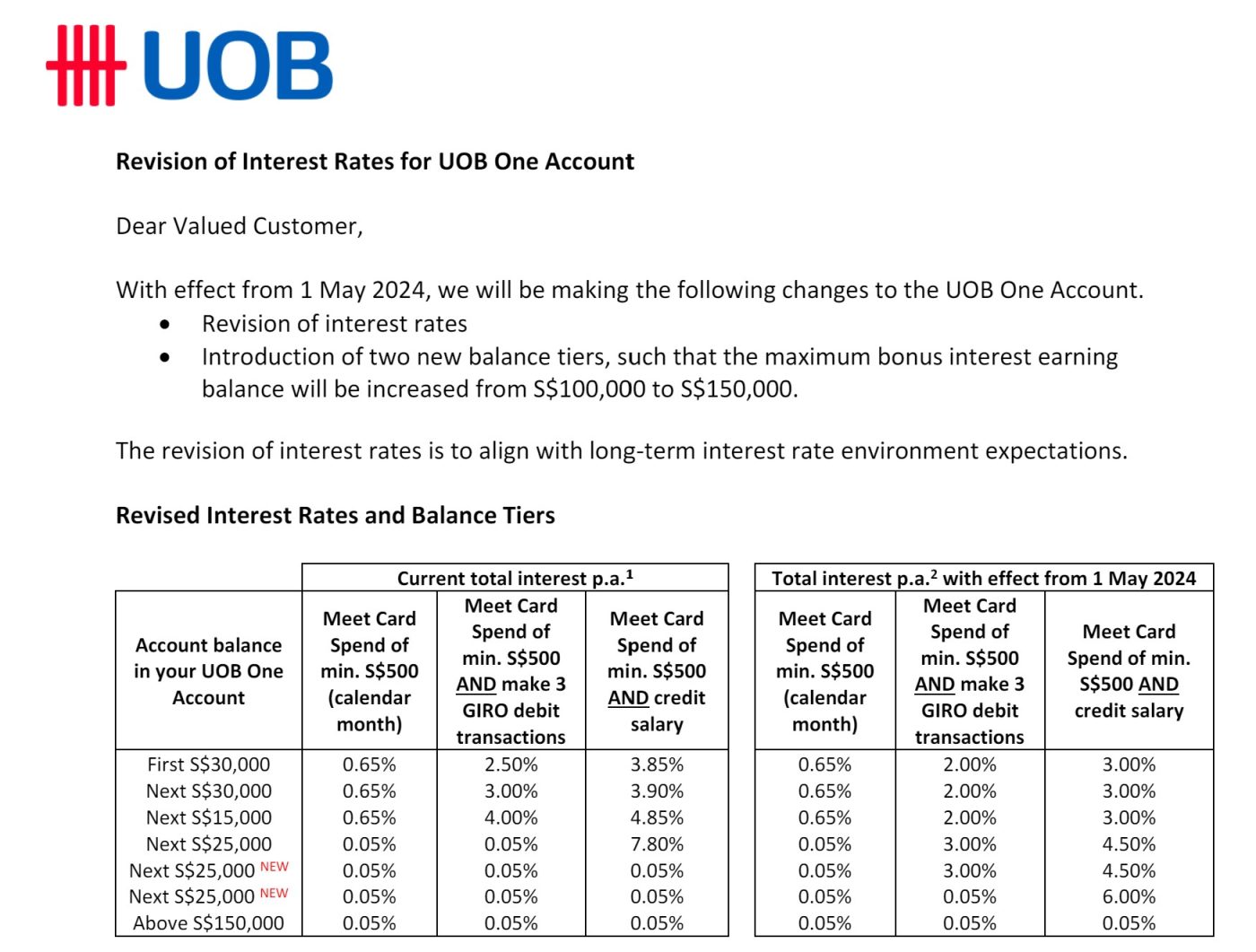Short term interest rates have been very interesting of late.
If you recall – in Jan the market was pricing in 6 interest rate cuts in 2024.
After this week’s US inflation data however, the market is now only pricing in 2 interest rate cuts in 2024.
This has led to a sharp increase in long term interest rates – Singapore 10 year yields have gone from 2.6% in Jan to almost 3.4% today.
Despite all that, bank fixed deposit interest rates keep dropping.
While stocks / REITs have been shrugging off the higher interest rates – on anticipation of interest rate cuts in 2H 2024.
3 things I wanted to discuss today:
- Best fixed deposit rates in Singapore today (April 2024)
- Will interest rates go up or down in 2024 (short term and long term rates)?
- Where to park cash today for the highest yield / liquidity – T-Bills, Fixed Deposit, Singapore Savings Bonds and High Yield Savings Accounts etc.

Best Fixed Deposit Rates yield 3.80% for 6 months? (as of April 2024)
To summarise, the best fixed deposit option if you deposit with the bank directly:
|
Tenure |
Best fixed deposit interest rate |
Bank |
|
3 months |
3.35% |
Bank of China or ICBC |
|
6 months |
3.25% |
Bank of China or CIMB |
|
12 months |
3.20% |
DBS/POSB Bank |
The options above, are if you’re a retail investor depositing cash into the bank directly.
If you’re slightly more adventurous – you can use Syfe Cash+ Guaranteed.
Basically you park the cash with Syfe, who will then deposit the cash into a bank fixed deposit.
This allows you access to institutional fixed deposit rates which are significantly higher than the retail rates above.
If you go down this path, these are the latest interest rates on offer:
- 3 months – 3.8%
- 6 months – 3.8%
- 12 months – 3.5%

Comparing interest rates for T-Bills vs Fixed Deposits vs Syfe Cash+ Guaranteed (April 2024)
Compared the 3 options below:
|
|
6 months |
12 months |
|
T-Bills yields |
3.75% |
3.60% |
|
Fixed Deposit (bank) |
3.25% |
3.20% |
|
Syfe Cash+ Guaranteed |
3.80% |
3.50% |
You can see how T-Bills and Syfe Cash+ Guaranteed are more attractive vs conventional fixed deposits.
I excluded money market funds like MariInvest / Fullerton SGD Cash Fund from the above because you cannot “lock in” yields with money market funds – they are floating and will fluctuate day to day.
But indicatively, money market funds are paying about 3.5 – 3.8% yields today, with T+1 liquidity (do note money market funds are technically not SDIC insured / risk free though).
Do note – Syfe Cash+ Guaranteed is NOT SDIC insured
To be absolutely clear though, Syfe Cash+ Guaranteed is NOT SDIC insured.
This means that unlike T-Bills (backed by Singapore government) or Fixed Deposit (SDIC insured up to $100,000), Syfe Cash+ Guaranteed is NOT risk free.
This is made clear by Syfe on their website:

The cash (for Syfe Cash+ Guaranteed) is parked in fixed deposits with the underlying bank.
But if the bank goes under, Syfe as a whole would only be insured up to $100,000, which may not be sufficient to cover the losses.
Whereas if you park the cash with the bank directly yourself, you are SDIC insured up to $100,000 (SDIC limits have gone up on 1 April).
So I leave it to individual investors to decide if they are fine with this risk, or they prefer something absolutely risk free for peace of mind.
Best Fixed Deposit Rates yield 3.25% for 6 months – if you go direct to the bank (as of April 2024)
Latest list of Fixed Deposit rates are set out below (bold being the most attractive for each tenure).
After the table I’ll share my views on:
- Are interest rates going up or down?
- Where to park cash today for the highest yield / liquidity – T-Bills, Fixed Deposit, Singapore Savings Bonds and High Yield Savings Accounts etc.
|
Bank |
Interest rate (per annum) |
Tenure |
Minimum deposit amount |
|
3.25% |
6 months |
S$10,000 |
|
|
|
3.25% |
3 months |
S$10,000 |
|
|
3.05% |
9 months |
S$10,000 |
|
|
2.95% |
12 months |
S$10,000 |
|
3.35% (mobile placement) |
3 months |
S$500 |
|
|
|
3.25% (mobile placement) |
6 months |
S$500 |
|
|
3.15% (mobile placement) |
9 months |
S$500 |
|
|
3.10% (mobile placement) |
12 months |
S$500 |
|
3.35% (mobile placement) |
3 months |
S$500 |
|
|
|
3.20% (mobile placement) |
6 months |
S$500 |
|
3.30% |
3 months |
S$50,000 |
|
|
3.20% |
12 months |
S$1,000 (max S$19,999) |
|
|
3.20% |
12 months |
S$50,000 |
|
|
3.15% (mobile placement) |
6 months |
S$20,000 |
|
|
|
3.00% (mobile placement) |
12 months |
S$20,000 |
|
2.95% |
3/4 months |
S$50,000 |
|
|
|
2.90% |
10 months |
S$50,000 |
|
3.00% |
6 months |
S$25,000 |
|
|
3.00% (deposit bundle promotion) |
12 months |
S$22,000 |
|
|
3.00% |
3/6/12 months |
S$30,000 |
|
|
2.90% |
6 months |
S$10,000 (fresh funds) |
|
|
|
2.60% |
10 months |
S$10,000 (fresh funds) |
|
2.90% (online) |
6 months |
S$30,000 |
|
|
|
2.80% (online) |
12 months |
S$30,000 |
Will interest rates go up or down in 2024 (short term vs long term rates)?
The US economy remains resilient – Dec pivot from Jerome Powell may have been a policy mistake
Spin it whatever way you like.
But the US economy remains very resilient.
I said in late 2023 that the early pivot from the Treasury/Feds creates the risk of allowing inflation to return.
3 – 4 months on, that looks to be exactly what’s happened.
Had Janet Yellen and Jerome Powell stuck to their guns a few more months and allowed the pain in markets to play out, we might be looking at a very different inflation environment today.
But they chose to take the foot off the pedal at that crucial juncture, allowing stock markets to inflate, and significantly easing financial conditions.
March US CPI numbers came in hotter than expected on all fronts.
0.4% month on month increase in both CPI and core CPI.
Core CPI up 3.8% year on year.


If the Feds cut interest rates with this kind of inflation numbers, I would be really worried about a second wave of inflation.
After this week’s inflation data.
The market is now only pricing in 2 interest rate cuts – starting in Sep 2024:

Why does US inflation matter for Singapore interest rates?
As some of you would know, Singapore’s MAS chooses to control SGD Forex rates.
Because of this the MAS does not have control over interest rates.
Interest rates are set by market forces, which are determined a great deal by US interest rates.
Long story short – if US inflation is not coming down, the Feds do not cut interest rates, this means higher interest rates for Singapore.
Sidenote that this also affects the rest of the world as they cannot cut interest rates before the Feds (they can but they will risk currency depreciation – look what happened to the Yen this week):

So… what does this mean for Singapore fixed deposit interest rates (short term and long term)?
Long term interest rates
Long story short – wherever US interest rates go, Singapore interest rates will likely follow.
US 10 year interest rates have gone from 3.8% to 4.5% of late.

Likewise – Singapore 10 year interest rates have gone from 2.6% to almost 3.4%:

The fact that stocks / REITs have stayed so resilient despite the sharp rise in long term interest rates is interesting – it suggests that investors are looking ahead at rate cuts in 2H 2024.
Will Powell deliver, given how hot US inflation is right now?
Short term interest rates
But that’s long term interest rates.
What about short term interest rates?
If indeed the Feds are going to cut interest rates less than expected (and the jury is still out on this one because 2024 is a US election year and Biden would want a strong economy heading into the elections).
Then this could imply that Singapore short term interest rates may stay higher for longer.
If that is the case, will we see 6-month T-Bills yields stay at the 3.8% range for longer?
If so this would make bank fixed deposits at 3.25% for 6 months look unattractive – possibly forcing the banks to raise rates or risk depositors pulling their funds for T-Bills instead?
No easy answers to this one unfortunately, as bank fixed deposit rates also depends on their need for liquidity.
Where to park cash today for the highest yield / liquidity – T-Bills, Fixed Deposit, Singapore Savings Bonds and High Yield Savings Accounts etc.
At a high level, these are the options available to you today for a cash / low risk investment:
|
|
Yield (indicative) |
Liquidity |
Risk Free? |
|
High Yield Savings Account (Eg. UOB One) |
Good (4%) |
Good |
Yes if below SDIC limit ($100,000) |
|
Money Market Funds (Eg. MariInvest, Fullerton SGD Cash Fund) |
Good (3.5 – 3.8%) |
Good |
No |
|
T-Bills (6-months) |
Good (3.75%) |
Low |
Yes |
|
Bank Fixed Deposit |
Average (3.2 – 3.5%) |
Average |
Yes if below SDIC limit ($100,000) |
|
Singapore Savings Bonds |
Low (but can lock in for 10 years) (2.95%) |
Good |
Yes |
What to ask yourself – split cash between T-Bills, Fixed Deposit and Savings Accounts?
A lot of you have asked what to consider when deciding how much cash to split between each of the following options:
- T-Bills
- Fixed Deposits
- Singapore Savings Bonds
- Money Market Funds
- High Yield Savings Accounts
The way I see it, it’s broadly a 2 step process:
- How much liquid cash do you need?
- Rest goes into highest yield options – based on your comfort level on risk
Key question to ask – how much liquid cash do you need?
I would say the key question to ask is how much liquid cash you need, to meet your spending needs the next 6 months.
Think about how much you need to spend.
Then think about how much cash you are expecting to come in over the next 6 months.
The difference is the amount of liquid cash you would need.
So if all of your spending needs are going to be met by your salary, or if a big bonus is coming in – then you can actually run very little liquid cash.
Whereas if you’re going to buy a house, a new car, or a big renovation, you’ll need to plan ahead and have that amount of cash set aside in liquid cash.
Some guidelines on liquidity – better safe than sorry
As a general note I would say don’t be stingy with liquidity.
It’s one of those where it’s better to be safe than sorry.
So after you run the analysis above – you’ll want to buffer for unexpected scenarios too.
For example a big medical bill that you need to pay upfront, then claim from insurance after.
A big car repair bill.
A decline in stocks that leads you to want to buy some stocks / REITs.
A loss of job, meaning no income in the short term.
Things like that.
As a general note I would say you always want to have enough liquid cash on hand to cover 6 months worth of expenses, as a worst case scenario.
BTW – we share commentary on Singapore Investments every week, so do join our Telegram Channel (or Telegram Group), Facebook and Instagram to stay up to date!
I also share thoughts on Twitter regularly.
Don’t forget to sign up for our free weekly newsletter too – with weekly roundups every Sunday!
Liquid Cash should go into options accessible on short notice – savings accounts, fixed deposits, money market funds
Once you have the number above.
That amount of liquid cash, should go into options that you can get back with ideally a day or two’s notice.
That will include:
- High yield savings accounts (eg. UOB One, OCBC 360) – as a savings account you can withdraw any time
- Fixed Deposits – can break anytime by telling the bank, although you will lose accrued interest
- Money Market Funds – they are T+1 liquidity
Number (1) tends to have the highest interest rates, although with the recent change UOB One Account now only pays 4.0% on $150,000.
But I still think this should be the priority – and you shouldn’t move on to fixed deposits or money market funds until you’ve maxxed out this option / set aside sufficient liquidity.

Singapore Savings Bonds is an outlier, because technically the money only comes back at the start of the next month.
In a worst case scenario if you just missed the redemption window, you might need to wait a whole month to get the money back.
I would say some Singapore Savings Bonds is fine as you can get the money back reasonably quickly, but don’t overdo it and put 90% of your liquid cash into Singapore Savings Bonds.
Rest of the cash goes into highest yield options – based on your comfort level on risk
Once you have the above – the rest just goes into the highest yielding option.
As of today, that’s probably 6-month T-Bills or money market funds.
Singapore Savings Bonds are actually a decent buy – 2.99% for 1-year
I just want to put it out there that the yields on the latest Singapore Savings Bonds are pretty decent.
You’re looking at:
- 2.99% yield for the first 6 years
- 3.06% yield for 10 years

If you look at the latest Singapore 10 year yields, you’ll see they shot up quite a bit this month.
If this holds up, we might see even higher yields on the next SSB – perhaps up to 3.2%.
Given that this allows you to lock in yields for up to 10 years, yet redeem any time with no risk of capital loss, it’s a pretty decent alternative to fixed deposits if you want to lock in yields for longer.

But… how much cash to hold, vs stocks or REITs or real estate?
Do note that the discussion above only addresses where to put your cash.
It doesn’t address the question of how much cash to hold, vs stocks or REITs or real estate.
That’s a much harder question (that we try to answer on the rest of Financial Horse).
But long and short, I would say it depends on 2 factors:
- Individual risk appetite
- Market conditions
Individual Risk Appetite – how much risk can you stomach?
Individual risk appetite is how much risk you can take.
If you’re a 62 year old approaching retirement, the amount of risk you can take is very different from a 25 year old starting his career.
Life goals matter too.
If you’ve saved up over a lifetime and finally have enough to afford a comfortable retirement, you may not want to put all that into high risk stocks and risk losing it all.
Whereas if your current capital is very low, you might not mind taking on higher risk for the chance to get great returns.
How much risk to take – only you can answer this question for yourself.
Market conditions – how cheap are stock valuations?
The other factor to consider is market conditions.
Yes I know this is market timing and all.
But I would say there are some times in markets like March 2020 or 2008/2009.
That as long as you have enough cash set aside for spending needs and contingencies, it probably makes sense to increase risk exposure given how cheap valuations are.
And vice versa.
But I know not everyone is comfortable with market timing, and some prefer to just dollar cost average regardless of market conditions.
In which case you can ignore this factor and focus on risk appetite above.
This article was written on 12 April 2024 and will not be updated going forward.
For my latest up to date views on markets, my personal REIT and Stock Watchlist, and my personal portfolio positioning, do subscribe for FH Premium.
Buy Bitcoin, Ethereum, and crypto on Coinhako – 10% off trading fees
I use Coinhako to purchase Bitcoin, Ethereum and crypto.
Enjoy 10% off trading fees using:
Invitation Code: CwHdSgU
Or sign up link: https://www.coinhako.com/affiliations/sign_up/CwHdSgU
Check out my full review on how to buy Bitcoin / Ethereum.
WeBull Account – Get up to USD 2500 worth of shares
I did a review on WeBull and I really like this brokerage – Cheap US Stock, Options and ETF trading, in a very easy to use platform.
I use it for my own trades in fact.
They’re running a promo now.
You can get up to USD 2500 free shares.
You just need to:
- Sign up for a WeBull Account here
- Fund USD 500
- Execute 5 trades

Trust Bank Account (Partnership between Standard Chartered and NTUC)
Sign up for a Trust Bank Account and get:
- $35 NTUC voucher
- 1.5% base interest on your first $75,000 (up to 2.5%)
- Whole bunch of freebies
Fully SDIC insured as well.
It’s worth it in my view, a lot of freebies for very little effort.
Full review here, or use Promo Code N0D61KGY when you sign up to get the vouchers!
Portfolio tracker to track your Singapore dividend stocks?
I use StocksCafe to track my portfolio and dividend stocks. Check out my full review on StocksCafe.
Low cost broker to buy US, China or Singapore stocks?
Get a free stock and commission free trading Webull.
Get a free stock and commission free trading with MooMoo.
Get a free stock and commission free trading with Tiger Brokers.
Special account opening bonus for Saxo Brokers too (drop email to [email protected] for full steps).
Or Interactive Brokers for competitive FX and commissions.
Would you recommend to buy SSB this month or wait till next month? Or is this a time frame allowable where you can buy this month, then if next month rates are higher, redeem and put into next month’s SSB? Thank you!
I would say you wait until the end of the month (before the deadline to buy SSBs) to make this decision.
By then you will be able to have some idea of what next month’s SSBs yields would look like (based on this month’s SG10Y yield), and can better make this decision.
I’ll try to do a fuller article on this towards the end of the month.